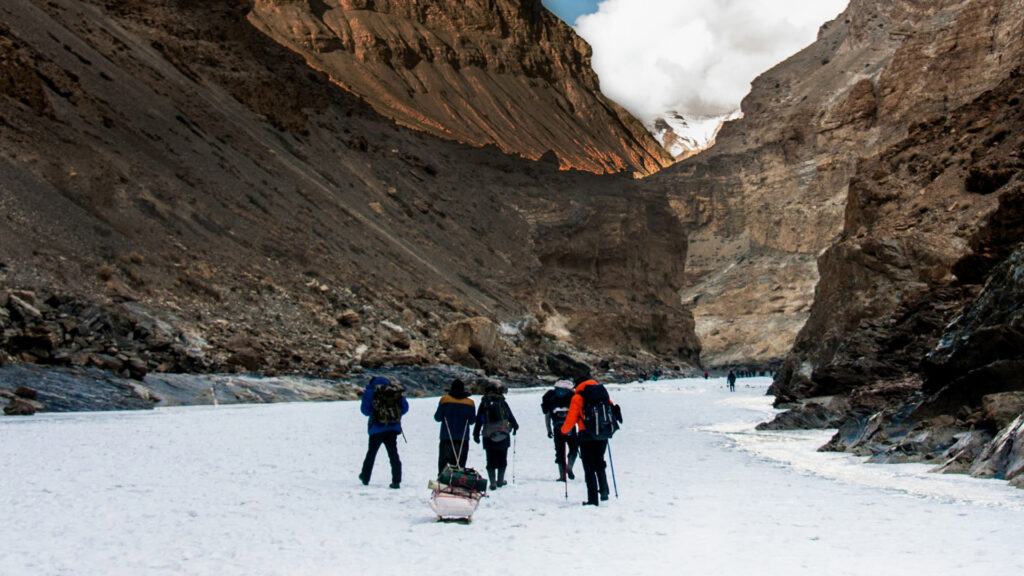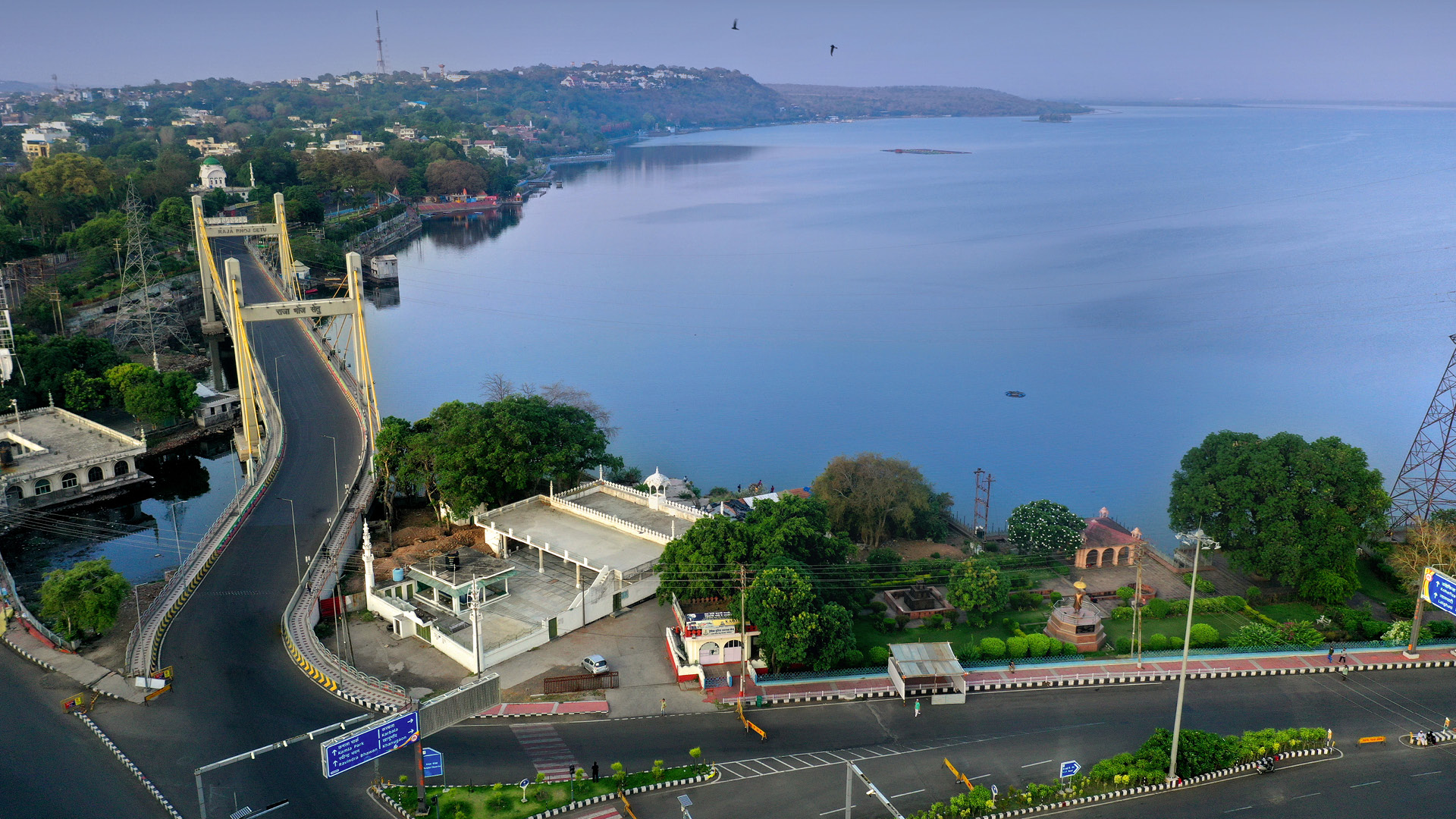According to a 2023 report by the World Travel & Tourism Council, three-quarters of the planet’s tourists are keen to travel more sustainably in the future, with close to 60 per cent having already opted for more eco-friendly travel options in the past few years. These statistics are just two of the many testaments for the much-needed global shift towards responsible travel and tourism. Let’s dive into Earth-friendly developments and initiatives that are creating a green buzz to ensure we can cleanly continue our globetrotting trips for years to come. After all, there is no Planet B!
By ANANYA BAHL
TURN IT ‘OFF’
The United Nations World Tourism Organisation (UNWTO) refers to ‘Overtourism’ as a concept explaining how mass tourism in any destination negatively affects the lives of locals, and even the visitors, in the region and, by extension, the overall ecosystem. This includes depletion of natural resources, climate change, and more. So, how do we avoid crowding a holiday spot? Simple: Travel during the off-season. For instance, Goa can be great during the monsoons, with some fun treks, like the one to Dudhsagar Falls; and Ladakh is a winter-wonderland for hikes and wildlife spotting in January! Or you can follow the ‘Deseasonalisation’ trend. This involves packaging a destination to appeal to a tourist during the off- season by creating a niche-specific travel offering. For example: The famed Swiss ski resort Davos can serve as a wellness destination during the summer (with its various sanatoriums) or be a great base for a culinary journey (think chocolates and fondue!). The possibilities are simply endless!
JUST DUPE IT

Tourists take in the traditional German timbered houses, lively cafés, and shops lining the historic Römerberg Square in Frankfurt, Germany.
Ever heard of ‘Undertourism’? As the name suggests, it’s a term used to describe often overlooked destinations in need of more tourists. Interestingly, these places may offer a better travelling experience because of being less crowded. This lines up well with the ‘Destination Duping’ trend, which means visiting a lesser-known region or city that offers excursions akin to its traditionally popular counterpart. For instance, avoid putting too much pressure on Jaipur’s resources by visiting Bikaner—a city packed with equally rich cultural, culinary, and retail offerings. Instead of exploring the riverine life around Rishikesh, savour the quieter solace of the Sundarbans. Skip Coorg’s valleys and sample the coffee in the Araku Valley of Andhra Pradesh. Or explore the monuments of Frankfurt instead of Berlin. And Australia’s Perth is just as verdant and charming as Sydney! You get the drift, right?
Skyscanner’s ‘Travel in Focus 2023’ report found that over 47 per cent of Indian travellers are willing to switch their travel plans to other destinations when offered better travel deals. Something tour operators can consider when offering different packages to help promote alternative destinations or ‘dupes’!
GET BACK TO THE WILD

A herd of bisons walks through the yellow-shaded autumn grass in Białowieża Forest, Poland.
Why restrict our green efforts at stopping the overuse of local resources? It’s time to get acquainted with the concept of ‘Rewilding’, which means restoring ecosystems that have been depleted through overtourism with the help of wildlife experts, community leaders, and responsible tourism stakeholders. Consider learning about ‘bear corridors’ and working with locals in Italy’s Central Apennines to help save the Marsican brown bear. Or bringing back the bison in Poland’s Białowieza Forest. Helping protect these creatures also means increased chances of spotting them when you’re visiting these areas with local experts. Slow travel also helps the rewilding process by reducing the strain on the environment. Try the ‘slow safaris’ in Sri Lanka’s Yala National Park—you will be helping conservation efforts by holidaying mindfully.
A report by The Federation of Hotel and Restaurant Associations of India (FHRAI), KPMG and, the PHD Chamber of Commerce and Industry (PHDCCI) states that India’s sustainable-tourism market was valued at US$ 26.01 million in 2022 and is expected to rise to US$ 151.88 million by 2032!
ALL FOR ONE

A tourist enjoys a traditional jump with Masai tribesmen in the Masai Mara National Park, Kenya.
It’s likely that few people would know the neighbourhood you live in as well as you do, right? Now, apply the same principle to the indigenous people of the destinations you want to visit. Apart from climate change, overtourism results in depletion of natural resources, increased property prices, and more. The rise in community-driven holidays is a welcome relief that enables locals to earn from tourist influx, but in a way that allows them to show us how it’s done! Mayurbhanj in Odisha has emerged as a great case study, with local royalty—the Bhanj Deo family—spearheading immersive heritage trails centred on dokra craft, chhau dances, and Kalinga history with the region’s tribal folk. Abroad, the wildlife and safari tourism managed by the Masai people in Kenya’s Masai Mara region is an excellent example of community-driven holidays, too.
The Agoda ‘Eco Deals Survey’ suggests that 87 per cent Indians care about sustainable travel in 2024, with financial incentives (like better travel deals) and the availability of sustainable travel packages being major factors affecting their choices.
AND THERE’S STILL SOME MORE!

Cyclists enjoying a ride on a bridge over a canal in Amsterdam, Netherlands.
Small inputs, when added together, make a big impact! How about visiting a cycling-friendly city like Amsterdam or Ghent? Use public transport whenever you’re travelling in a new metropolis. Eat like a local—this will ensure you’re not only tasting traditional flavours but eating in a more sustainable fashion by consuming what’s grown there as opposed to sampling an expensive, imported ingredient. Try farm-to-table restaurants and let the chef regale you about growing his own produce. It’s the perfect recipe to feel good with every bite. Do your research and find hotels that are championing sustainability in their own way, whether by using solar power or limiting laundry rounds. And finally, use technology to your advantage: hop on e-buses and e-bikes (in cities like Mumbai, Pune, and New York City) and browse apps that can educate you on being sustainable. These include Bikemap (for cycling paths around the world), HappyCow (to find vegan and veggie restaurants), and Localvore (to find community-driven farms and initiatives), among others.
In 2024, Scandinavia still leads the pack on progress when it comes to the UN’s Sustainable Development Report. Finland stands first, followed by Sweden, and Denmark. Head to these places for a taste of planet-friendly living!
Related: Here Are The 9 Best Wellness Retreats You Need To Try Out




